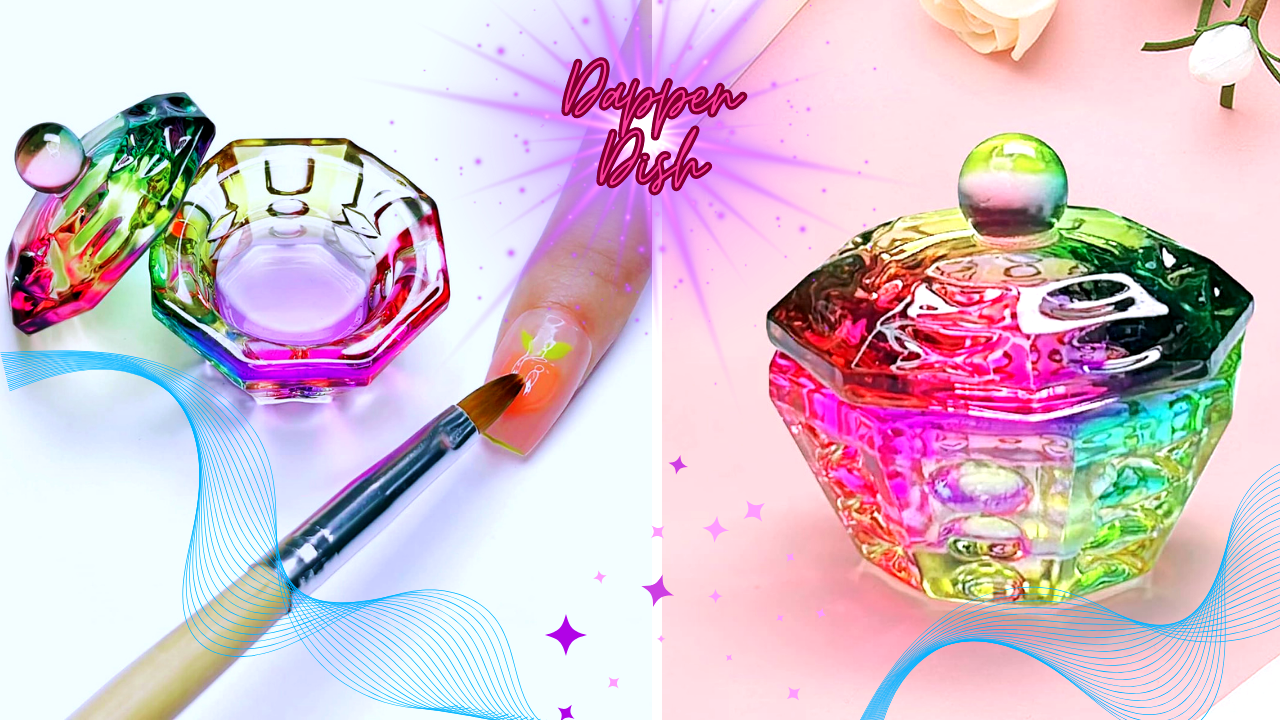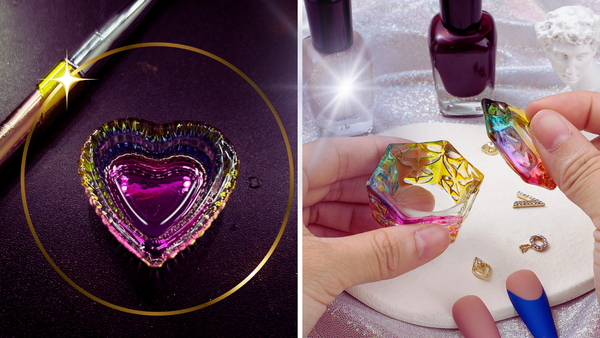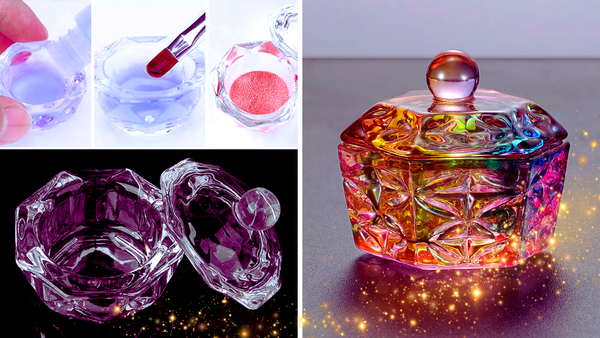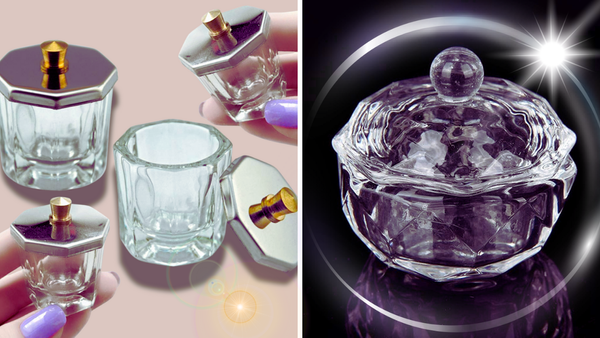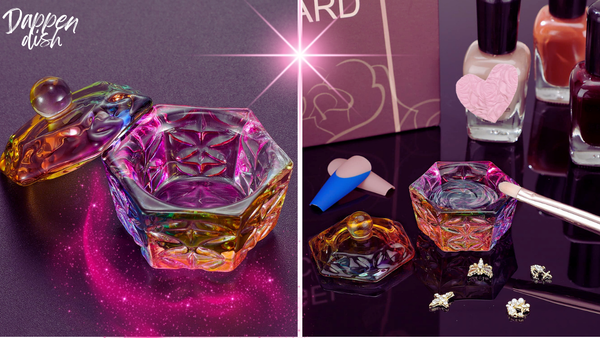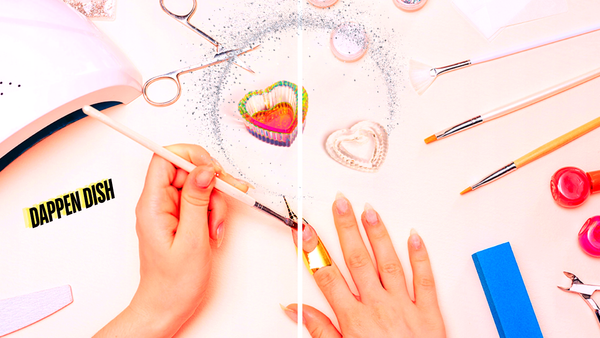Key Takeaways:
- Nail dappen dishes are essential tools in nail art. They are made from various materials, such as glass, plastic, and ceramic.
- They are designed to hold liquids such as acrylic nail liquid and acetone, making them perfect for mixing and application.
- The choice of material impacts the durability, ease of cleaning, and overall user experience.
Nail dappen dishes might seem like a small part of the nail art toolkit, but they play a crucial role in achieving that perfect manicure. These tiny containers are designed to hold and mix liquids like acrylic liquid and acetone, making them indispensable for nail technicians and enthusiasts alike. But what exactly are nail dappen dishes made of, and how does the material affect their functionality? Let's dive into the details.
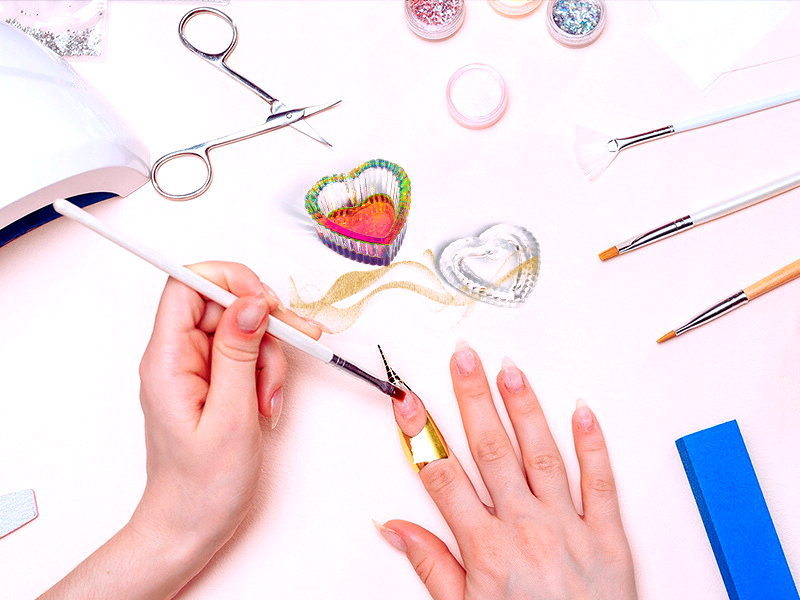
Glass Dappen Dish
Glass dappen dishes are a popular choice among nail technicians. They are known for their durability and ease of cleaning. Glass is non-porous, which means it doesn't absorb the liquids, making it perfect for holding acrylic liquid and acetone. This material also allows for easy visibility of the contents, ensuring precise mixing.
However, glass dappen dishes can be fragile. They need to be handled with care to avoid breakage. Despite this, many users prefer glass due to its aesthetic appeal and the fact that it doesn't react with the chemicals used in nail art. If you're looking for a sturdy and reliable option, a glass dappen dish might be the perfect fit for your needs.
Plastic Dappen Dishes
Plastic dappen dishes are another common option. They are lightweight and less prone to breaking compared to their glass counterparts. This makes them a great choice for mobile nail technicians who need to carry their tools around. Plastic dishes are also generally more affordable, making them accessible to a wider audience.
On the downside, plastic can sometimes react with certain chemicals, which might affect the dish's longevity. Additionally, plastic dappen dishes might not offer the same level of precision when mixed with glass. Despite these drawbacks, they remain popular due to their practicality and cost-effectiveness.
Ceramic Dappen Dishes
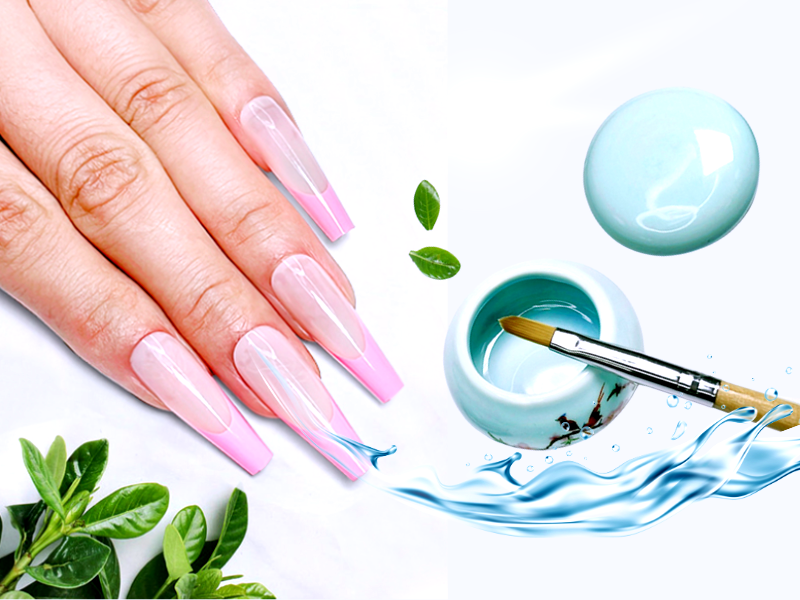
Ceramic dappen dishes offer a middle ground between glass and plastic. They are sturdy and less likely to break than glass, yet they don't react with chemicals as some plastics do. Ceramic dishes are also easy to clean and maintain, making them a favorite among many nail technicians.
One of the main advantages of ceramic dappen dishes is their weight. They are heavier than plastic, making them less likely to tip over during use. This stability can be particularly useful when working with small quantities of acrylic liquid or other nail products. If you value both durability and functionality, ceramic might be the way to go.
Stainless Steel Dappen Dishes
Stainless steel dappen dishes are known for their robustness and longevity. They resist corrosion and can withstand the harsh chemicals used in nail art. Stainless steel dishes are also easy to clean, making them a hygienic option for professional use.
However, stainless steel dappen dishes can be more expensive than other materials and heavier, which might not be ideal for everyone. Despite these factors, their durability and ease of maintenance make them a worthwhile investment for serious nail technicians.
Silicone Dappen Dishes
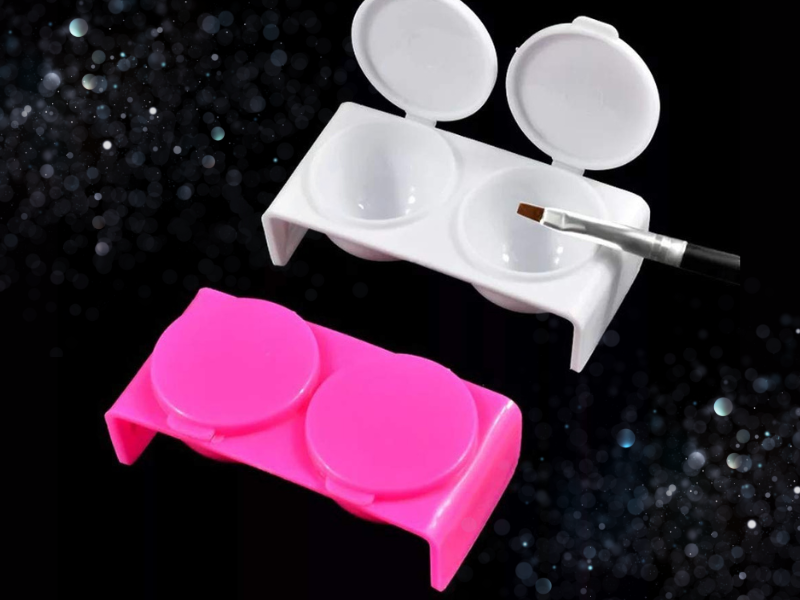
Silicone dappen dishes are a relatively new addition to the market. They are flexible, making them less likely to break or crack. Silicone is also resistant to most chemicals, ensuring the dish remains in good condition over time. These dishes are easy to clean and can be a great option for those who prefer a more modern material.
One potential drawback of silicone dappen dishes is that they might not offer the same level of stability as heavier materials like glass or ceramic. However, their flexibility and resistance to damage make them a practical choice for many users.
Choosing the Right Dappen Dish
When selecting a dappen dish, consider the type of liquids you’ll be using and how often you’ll need to clean the dish. For instance, if you frequently use acetone, a glass or stainless steel dish might be more suitable due to its resistance to harsh chemicals. On the other hand, if you need a lightweight and portable option, plastic or silicone could be the way to go.
It’s also important to think about the size of the dish. A smaller dish might be perfect for holding small quantities of acrylic liquid, while a larger one could be more suitable for mixing multiple products. Additionally, consider the quantity of liquid the dish can hold to ensure it meets your needs. Ultimately, the right dappen dish will depend on your specific needs and preferences.
User Reviews and Feedback

Many users have shared their experiences with different types of dappen dishes. For example, one share review mentioned that their glass dappen dish was the perfect size for mixing acrylic liquid and was easy to clean. Another user praised their ceramic dish’s sturdiness and ability to hold liquids without tipping over.
Other reviews highlight the practicality of plastic dappen dishes, especially for those who need a lightweight and affordable option. These dappen dishes have fewer returns compared to similar products. Some users also appreciate the flexibility and durability of silicone dishes, noting that they are less likely to break or crack.
Practical Examples
Consider a nail technician who frequently travels to clients' homes. They might prefer a plastic or silicone dappen dish due to its lightweight and portable nature. On the other hand, a technician working in a salon might opt for a glass or ceramic dish for its durability and ease of cleaning.
Another example is a nail enthusiast who enjoys experimenting with different nail art techniques. They might benefit from having multiple dappen dishes made of different materials, allowing them to choose the best one for each specific task. This flexibility can enhance their overall nail art experience.
Summary
Nail dappen dishes are handy, essential tools in the world of nail art. They are available in various materials, such as glass, plastic, ceramic, stainless steel, and silicone. Each material offers unique benefits and drawbacks, so choosing the right one based on your specific needs is important. Whether you prioritize durability, ease of cleaning, or portability, a dappen dish is perfect. Don't miss out on up to 60% off savings on nail essentials, making it the perfect time to upgrade your nail art toolkit!
FAQ
What are nail dappen dishes made of?
Nail dappen dishes can be made from various materials, including glass, plastic, ceramic, stainless steel, and silicone. Each material has its advantages and disadvantages, so the best choice depends on your specific needs and preferences.
How do I clean a dappen dish?
Cleaning a dappen dish is generally straightforward. You can use acetone or a similar product remover to remove any residue from glass, ceramic, and stainless steel dishes. Plastic and silicone dishes can also be cleaned with a brush and acetone, but it's important to check that the chemicals won't damage the material.
Can I use a dappen dish for other purposes?
Yes, dappen dishes can be versatile tools. While they are primarily designed for holding and mixing nail liquids like acrylic liquid and acetone, they can also be used for other small mixing tasks, such as blending nail powders or holding small quantities of beauty products.
